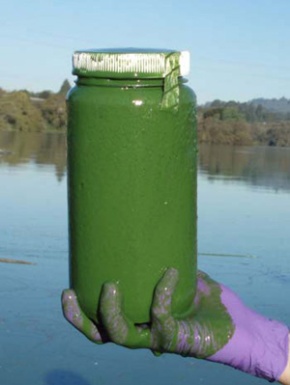Listen up friends. My Marine Life professor showed our class this article today in class–it reviews and adds to the study that I talked about in the post before last (http://www.plosone.org/article/info%3Adoi%2F10.1371%2Fjournal.pone.0012576#abstract0). This article was written four months ago by Tim Stephens of the University of California at Santa Cruz, and adds some interesting new perspectives on the discoveries found in the PLOS One study. Microcystis is becoming a bigger and bigger problem: “This study is significant because it is the first to establish a connection between freshwater contamination by microcystin and marine mammal mortality. This land-to-sea link has important implications for marine life and human health,” says Stephens.
The real problem is that this poisonous algae is causing many deaths in sea otters. Co-author Melissa Miller confirms this suspicion, because “in 2007, Miller began seeing dead and dying sea otters…with evidence of acute liver failure.” And what exactly made all of these innocent sea otters living on Monterey die? Their tissue tested positive for microcystin–the deadly gunk.
The algae has become not just a problem for sea otters, but for small aquatic animals, dogs that drink the runoff water, and humans. It is crucial that we find a way to get rid of the algae and prevent more deaths and illnesses from occurring.
Stephens, Tim. “Sea Otter Deaths Linked to Toxin from Freshwater Bacteria.” – UC Santa Cruz. N.p., 10 Sept. 2010. Web. 06 Nov. 2012. <http://news.ucsc.edu/2010/09/otter-toxin.html>.
Published December 29, 2010.
